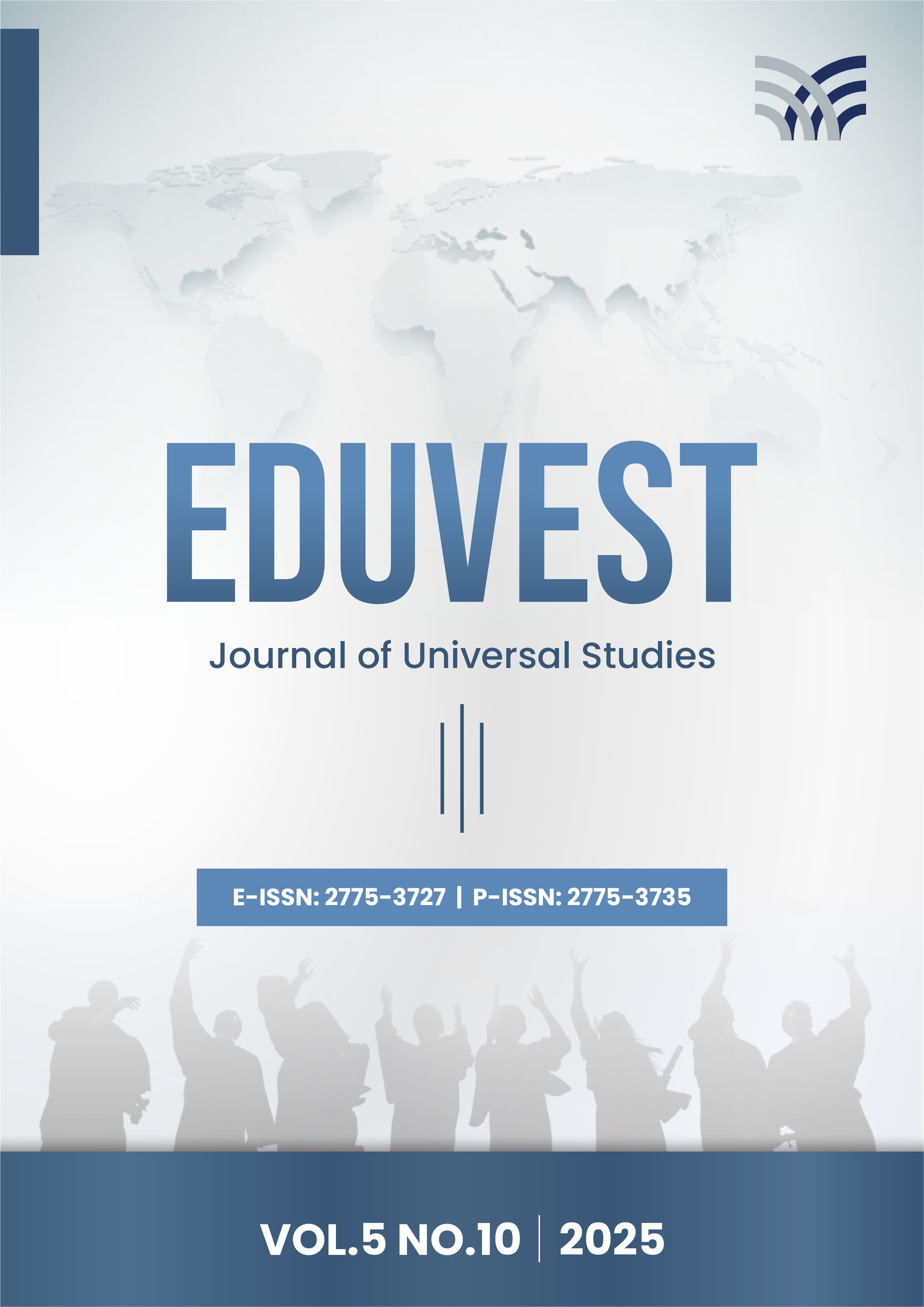Factors That Influence Turnover Intention at PT XYZ
##semicolon##
https://doi.org/10.59188/eduvest.v5i10.51352##semicolon##
Employee Engagement##common.commaListSeparator## Job Satisfaction##common.commaListSeparator## Turnover Intention##common.commaListSeparator## Career Development##common.commaListSeparator## Work EnvironmentAbstrakt
High employee turnover rates represent a critical challenge in human resource management, particularly in joint venture companies operating in the power generation sector, where maintaining workforce stability is essential for operational excellence and technology transfer. Therefore, this research aims to analyze the influence of these two variables on turnover intention by considering important dimensions such as conditions for engagement, opinion engagement, engagement behavior, career development, work environment, employee relationships with management, and compensation and benefits. The study employs a mixed-methods approach, combining Partial Least Squares Structural Equation Modeling (PLS-SEM) for quantitative analysis with in-depth qualitative interviews to provide comprehensive insights. The quantitative findings reveal that job satisfaction (β = -0.578, p < 0.001) exerts a stronger negative influence on turnover intention compared to employee engagement (β = -0.382, p < 0.001), collectively explaining 70.2% of the variance in turnover intention (R² = 0.702). Specifically, career development, work environment, and employee relationships with management emerged as significant predictors of turnover intention, while opinion engagement showed no significant direct effect. Qualitative insights revealed underlying issues, including unclear certification pathways, cultural and communication barriers between local and expatriate staff, insufficient management support during high-pressure situations, and perceived inequities in compensation structures. This research provides theoretical contributions by extending the understanding of job satisfaction and engagement dimensions in cross-cultural joint venture contexts, while offering practical implications through targeted business solutions, including transparent career path development, compensation benchmarking, enhanced management communication strategies, and systematic training programs.
##submission.citations##
Bakotic, D., & Babic, T. (2013). Relationship between working conditions and job satisfaction: The case of Croatian shipbuilding company. International Journal of Business and Social Science, 4(2), 206–213.
Creswell, J. W. (2014). Research design: Qualitative, quantitative, and mixed methods approaches (4th ed.). SAGE Publications.
Dewan Energi Nasional. (2017). Rencana Umum Energi Nasional (RUEN). Jakarta: Ministry of Energy and Mineral Resources.
Dewi, N. P. A. A. R., & Nurhayati, N. M. (2021). Pengaruh employee engagement terhadap turnover intention pada karyawan dengan job satisfaction sebagai variabel intervening. Jurnal Manajemen, Strategi Bisnis dan Kewirausahaan, 15(1), 73–82. https://doi.org/10.38035/ijam.v2i2.246
Hair, J. F., Hult, G. T. M., Ringle, C. M., Sarstedt, M., Danks, N. P., & Ray, S. (2022). Partial least squares structural equation modeling (PLS-SEM) using R: A workbook. Springer. https://doi.org/10.1007/978-3-030-80519-7
Harzing, A.-W., & Pinnington, A. (2011). International human resource management (3rd ed.). SAGE Publications.
Institute for Energy Economics and Financial Analysis. (2022). Operational challenges in Indonesian IPP projects: Lessons from coal-fired power plants. IEEFA Report.
International Energy Agency. (2023). World Energy Outlook 2023. Paris: IEA Publications. https://doi.org/10.1787/827374a6-en
Kumar, R., & Singh, A. (2020). Employee retention strategies in thermal power plants: An Indian perspective. Energy Policy, 145, 111728. https://doi.org/10.1016/j.enpol.2020.111728
Kundu, S. C., & Gahlawat, N. (2016). Effects of supportive work environment on employee retention: Mediating role of organizational engagement. International Journal of Organizational Analysis, 24(4), 682–695. https://doi.org/10.1108/IJOA-12-2013-0742
Nguyen, T. H., Pham, H. T., & Le, Q. V. (2022). The mediating role of employee engagement in the relationship between job satisfaction and turnover intention: Evidence from Vietnamese energy sector. Journal of Asian Business and Economic Studies, 29(3), 210-228. https://doi.org/10.1108/JABES-08-2021-0123
Park, S., & Lee, J. (2023). Turnover intention in nuclear power plants: The roles of safety climate, training, and supervisor support. Safety Science, 158, 105967. https://doi.org/10.1016/j.ssci.2022.105967
Perusahaan Listrik Negara. (2023). Rencana Usaha Penyediaan Tenaga Listrik (RUPTL) 2021–2030. Jakarta: PLN.
Robbins, S. P., & Judge, T. A. (2015). Organizational behavior (16th ed.). Pearson Education.
Sugiyono. (2019). Metode penelitian kuantitatif, kualitatif, dan R&D (2nd ed.). Alfabeta.
World Bank. (2022). Energy sector workforce development in emerging economies. Washington, DC: World Bank Group. https://doi.org/10.1596/37842
Zhang, L., Wang, Y., & Chen, X. (2021). Turnover intention among power plant employees in China: The role of perceived organizational support and career development. International Journal of Human Resource Management, 32(18), 3854-3879. https://doi.org/10.1080/09585192.2019.1651373.
##submission.downloads##
Publikované
##submission.howToCite##
Číslo
Sekcia
##submission.license##
##submission.copyrightStatement##
##submission.license.cc.by-sa4.footer##










